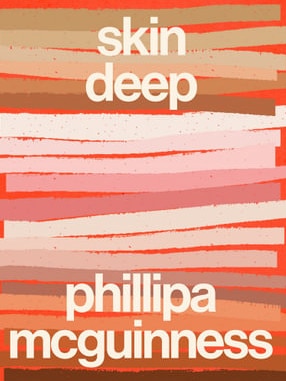Skin Deep: fascinating skin questions answered
Why can’t we tickle ourselves? How does sunscreen work? Here, you’ll find the anwers.

Like the subject itself, Phillipa McGuinness’s Skin Deep is a large organ.
We can’t unreservedly say it’s largest because, as the author points out in this cover-all-bases book, some scientists now believe the mucosal lining of our intestines has a greater surface area.
That’s for future biologists to work out, and for future writers, filmmakers, songwriters and artists to grapple with. Until then, skin is No.1, from Michelangelo’s God reaching out to Adam to ET touching fingers with a boy to Burt Lancaster and Deborah Kerr pressing flesh on a beach in Here to Eternity to Cole Porter’s I’ve Got You Under My Skin, to all the flesh in Peter Carey’s Illywhacker.
McGuinness, a Sydney-based writer and former publisher, mentions all of the above, and lots more.
She draws deeply on literature and films to “get under the skin of skin”.
She also calls on science, interviewing experts. The trick, I think, with writing a popular science book, or a popular history book for that matter, is almost to leave out the science and history.
It has to be there, of course, but the narrative should be driven by something that informs and entertains general readers.
David Hunt’s Girt, an “unauthorised history” of Australian colonisation, is a good example. The history is there but it doesn’t girt in the way of the laughs. In science, the late, great Oliver Sacks wrote page-turners. McGuinness knows this, from her former role at NewSouth Publishing, and after a slow start she more or less pulls it off.

Her previous book is the engaging, perceptive The Year Everything Changed: 2001.
The slow start, in this reader’s opinion, is due to the author, who notes she is white on multiple occasions, spending too much time explaining that race has nothing to do with biology. Many of us, she argues, remain “flat-earthers” in this regard.
“In a book about skin, the question of skin colour is unavoidable,’’ McGuinness writes. “To evade it would serve no one. To listen and learn from those with lived experience of racism is my start and end point.”
No argument there. Discrimination based on skin colour is an unforgivable, ongoing part of human history. Yet I think this subject deserves its own book – one written by the likes of the academic, author, broadcaster and filmmaker Larissa Behrendt, who provides a cover blurb, or the American writer Ta-Nehisi Coates, who the author quotes.
It’s when McGuinness shifts from this “cultural lens” to Oliver Sacks mode that the book becomes about skin as an organ that protects us and, sometimes, hurts us.
She blends real cases with semi-fictional ones: eczema (Andrew McGahan’s novel Praise), psoriasis (Dennis Potter’s The Singing Detective and the oeuvre of John Updike), acne (Dr Pimple Popper aka Dr Sandra Lee). Semi-fictional because the authors/popaholics draw on personal experience.
There are fascinating questions about this organ that operates “out of our control”. Why can’t we tickle ourselves? How does sunscreen work? Are people who refuse to bathe better or worse off? Where is our thinnest and thickest skin?
And how soon can new lovers say they have touched each other’s skin for the first time, given our epidermis sheds and reforms? The sexiness of skin receives due recognition, particularly via Michael Ondaatje’s novel The English Patient.
All of this is wafer-thin to the skin. It can choose to be far more serious, and this where McGuinness hits her stride, exploring the dermatological-psychological connection.
This link is one she knows personally, from her husband breaking out in shingles following the death of their son. She mentions this but then moves to a harrowing case that illustrates just how life-threatening the derm-psych association can be.
She turns to the American doctor-writer Atul Gawande, who I think is the best living explainer of medical matters, and a patient who had such a relentless psychological itch that she scratched through her skull to reach it.
Read that chapter and then read Gawande’s article, The Itch, in The New Yorker. It is available online and it is as confronting as Guinness says.
As mentioned, this is an expansive book. If you only have time to read a bit, go for chapters five and six, about skin cancer, considered a “runaway steam train” Down Under.
I read them and before reading another page I made an appointment for a check up. If you are under 18, still read them because they are important and because you may decide it’s a good time to become a dermatologist.
Stephen Romei is a literary critic



